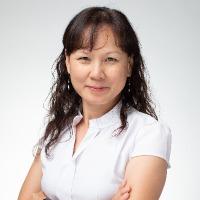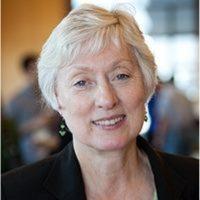
The Projects That Are Breaking Ground in Patient Care
From ensuring care for people with disabilities to establishing new policies that hold nursing homes more accountable, experts at the UCSF School of Nursing are leading innovative projects to improve patient care.
Where Personal Care Aides Are Needed Most
Approximately 7.5 million adults in the United States have a disability that makes it difficult for them to dress, bathe or get around inside their homes. Personal care aides, typically funded by Medicaid to provide in-home support for self-care tasks, are critical to ensure that people with disabilities can remain in their homes and communities.

The U.S.’s shortage of personal care aides is well-documented, but geographic workforce data is lacking, making it difficult to determine where the need is greatest.
In a first-of-its-kind study, Susan Chapman, PhD, MPH, FAAN, professor, and Laura Wagner, PhD, RN, FAAN, professor, identified personal care aid workforce shortages by region.
One of Health Affairs’ top 10 articles of 2022, the study found the highest percentage of adults with a self-care disability in the southern U.S. The gap between personal care aide supply and potential need for services was also greatest in southern states, particularly rural areas.
They also found that personal care aides across the U.S. live below the poverty threshold at a rate of nearly three times the average of all other occupations in the country.
Increased wages for personal care aides, Medicaid waivers to pay family caregivers for personal care services and additional workforce data collection are some of Chapman and Wagner’s recommendations to address workforce shortages and ensure that people with disabilities, particularly in southern states, can access care.

Developing Curriculum for Health Care Workers Worldwide
When the World Health Organization (WHO) put out the request for experts to develop integrated clinical care curriculum to help train millions of health care workers worldwide at its new Academy, faculty at the UCSF School of Nursing answered the call.
Utilizing evidence-based practice principles, the faculty team led by professor Jyu-Lin Chen, PhD, CNS, FAAN, is developing competencies, goals and objectives for e-learning modules that cover the scope of nursing practice for the care of patients across the lifespan. The team includes Rebecca Silvers, DNP, ACPNP, assistant clinical professor, and Lisa Guertin, DNP, ACNP, associate professor.

“UCSF School of Nursing continues to be a global leader in the translation of science to clinical practice,” says Chen, an internationally recognized expert in global health research. “The content is for frontline workers in low- and middle-income countries where the role of a nurse – and available resources – varies greatly.”
Modules will include evidence- and concept-based learning that encourages problem-solving, effective thinking and the transfer of knowledge to different situations and contexts.
Demanding Financial Transparency to Ensure Minimum Staffing Levels in Nursing Homes
Nursing home staff levels are strongly associated with quality of care; more staff leads to better care.
Yet for decades, U.S. nursing homes have not had adequate staffing levels. A 2022 study of 14,964 skilled nursing facilities found that 95% failed to meet all minimum staffing recommendations.
Some say the solution is increased federal funding. But Charlene Harrington, PhD, RN, FAAN, professor emerita, and Elizabeth Halifax, PhD, RN, assistant professor, disagree, and are advancing policies to hold nursing homes accountable for the funds they already have.
Nursing homes often hide profits, diverting funds away from staffing, due to a lack of financial transparency and accountability, says Harrington and Halifax.


Most nursing homes are owned by for-profit entities and make hidden profits by contracting with companies with shared ownership that provide services like property leases and staffing. In 2015, 75% of nursing homes had related-party transactions totaling $11 billion.
Harrington and Halifax’s research supports adoption of policies to require nursing homes to provide annual financial cost reports for their entire company – both parent company and related-party companies – and adhere to an annual ceiling on their combined profits and administrative costs.
Improving Care for Older Adults
The global population is aging rapidly. Between 2020 and 2050, the number of people 80 years old or older is projected to triple.
Preventative care for older adults is critical to ensure the health care system can keep up, says alumna Anna Ignatova, DNP ‘22, MS, NP.
As part of UCSF’s Doctor of Nursing Practice program, Ignatova dedicated her capstone project to designing and implementing a frailty assessment process for 97 homebound older adults in San Francisco. Frailty is a condition associated with greater health care costs and utilization. Ignatova utilized the FRAIL Questionnaire, a five-question assessment that measures fatigue, resistance, aerobic capacity, illnesses and loss of weight.


“With just a brief assessment, we were able to understand who was most in need of preventative care and begin appropriate interventions,” says Ignatova, who works with homebound older adults as a nurse practitioner with Kaiser Permanente. “The types of frailty assessments can improve health outcomes and optimize our health care system’s limited resources.”
With the initial project success, Ignatova is now developing a proposal to make frailty assessments routine for Kaiser Permanente San Francisco’s older adult patient population.
Improving Type 2 Diabetes Prevention with Precision Health
Approximately 462 million people worldwide have type 2 diabetes, a chronic disease that can lead to heart disease, stroke or death.
Causes of type 2 diabetes vary among individuals and groups – and include both genetic and behavioral factors – making the disease difficult to prevent and treat.
But associate professor Elena Flowers, PhD, RN, FAAN, is using precision health to advance knowledge of type 2 diabetes and improve care.
Flowers studies the underlying mechanisms that contribute to variability in both the cause of type 2 diabetes and the ways patients respond to treatment. She seeks to identify novel biomarkers that enhance risk reduction strategies and improve diabetes prevention and treatment.
One area of Flowers’ research explores MicroRNAs as potential predictors of type 2 diabetes.

MicroRNAs regulates gene expression and characterize the impact of the environment and behaviors in the context of genetic characteristics. They have the potential to illuminate how biological and behavioral factors interact in the development of type 2 diabetes.
Flowers identified five MicroRNAs that were optimal predictors of type 2 diabetes in a data sample from the National Diabetes Prevention Program, pointing to the possibility that MicroRNAs can improve risk detection and responses to interventions.



